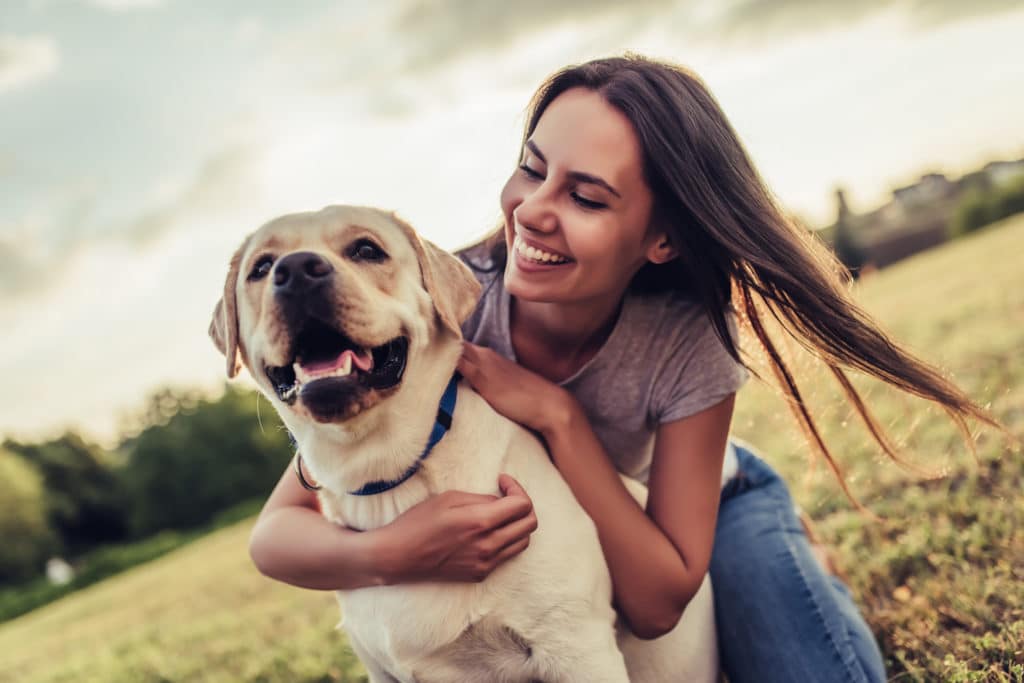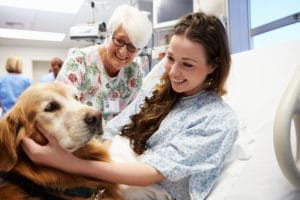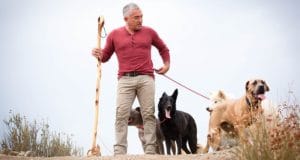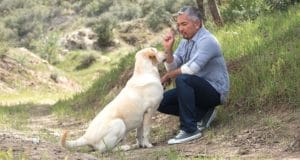For centuries, we’ve been teaching dogs to do things for us. Recently, we’ve come to find that man’s best friend is capable of teaching children and adults in ways people cannot. This is how humans can learn from dogs.
Working therapy dogs
One group, the Pet Prescription Team (PPT) in La Habra, California, works a special team of therapy dogs at Help for Brain Injured Children, Inc. (HBIC), a non-profit school for children and young adults with moderate to severe multiple disabilities.
During their sessions, certain exercises are performed, each with a different goal: Walking the dog develops motor skills; working a dog on an agility course develops the ability to perform a task; petting the dog while it sits politely teaches the proper way to touch; identifying ears, nose, etc. on the dog develops word association; being accepted by a dog helps to build confidence.
One of the program’s highlights is participating in California State University Fullerton’s Special Olympics. “[The dogs] brought a new level of athlete interaction, as well as a calming effect to the kids,” says Krystal Emery, founder and director of PPT.
“The comfortable and tactile communication that existed between the therapy dogs and the athletes was easy to see. It took away, for a short time, the pain and the problems that have been poured, unfairly, on these lovely children.”
Reading dogs
Research done by a Minnesota pilot project called PAWSitive Readers found that trained therapy dogs helped ten of fourteen grade-school participants improve their reading skills by one grade level. Additionally, a University of California study showed that children who read to the family dog improved their ability by an average of twelve percent.
“Dogs not only help children learn to read, they help children learn to love reading,” says Michael Amiri, coauthor with his wife, Linda, of the children’s book “Shellie, the Magical Dog.” He adds, “And that’s true of children with and without learning disabilities.”
Amiri believes that the reason dogs helps kids learn to read is because they boost confidence and eliminate embarrassment (dogs don’t laugh at mispronounced words), are polite listeners (no interrupting), and it’s just plain fun for kids to be around a dog.
Hope dogs
A Fair Shake for Youth, a non-profit organization in New York City, takes advantage of a dog’s natural compassion to help at-risk youth develop empathy, self-esteem and other positive skills and behaviors that are critical to becoming contributing, successful members of their community.
The program, which is primarily offered to middle and high school youth, teaches kids to train dogs and about positive reinforcement — too frequently a new concept. They also learn about communication, body language, love, and success. The curriculum includes guests and demonstrations, field trips to visit shelters, and learning about pet overpopulation, puppy mills, and breed discrimination.
“Twenty-eight percent of New York City kids live in poverty. With that poverty come challenges, including poor schools, violent neighborhoods, domestic abuse, broken homes, etc. Kids who learn empathy are more resilient, have a better chance,” said Audrey Hendler, Founder and Executive Director of A Fair Shake for Youth.
Participants in the program seem to be proving Hendler’s point.
“I used to think dogs were like machines, but now I see that they have families and feelings,” said an elementary school participant in Hendler’s 2011 summer program. “I convinced my friend to stop beating his dog,” said a middle school-aged youth, also from Hendler’s program.
For more information how to get involved, visit, www.afairshakeforyouth.org
Jail dogs
Many county and state prisons, and even military brigs, have started adopting programs where inmates get a dog to train — either a rescue that need to be rehabilitated, or a dog being trained for a service, such as a guide or hearing dog. The inmates learn something too.
PAWS Shelter and Humane Society in Kyle, Texas pioneered a program called Cell Dog, which pairs inmates with their hard to place shelter dogs.
“While inmates train the dogs, the dogs teach the inmates responsibility and caring,” said Beverly Cambron, a volunteer at PAWS. For more information and how to get involved, go to https://pawsshelter.org/cell-dog/.
At the Naval Consolidated Brig aboard Marine Corps Air Station Miramar, prisoners train dogs to work as service animals for wounded veterans. The dogs, on the other hand, touch the prisoners’ lives in a positive way. Oftentimes when people have failed to reach an inmate, the dogs succeed.
“I had anger issues when I first came here, but the dogs have helped me,” said an inmate. “They’re a nice break, and it feels good doing something selfless.”
These are just a few examples of the hundreds of canine programs that are teaching us how to be better people. Regardless of our own experiences in life, we could all learn a little about unconditional love and compassion from our dogs.













